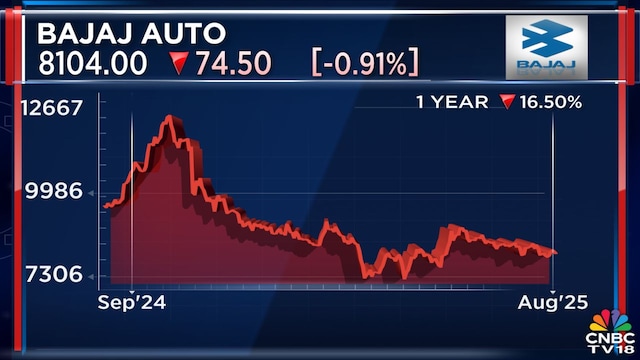“Our exports to the US are basically in two brands — KTM, that’s about 10,000 vehicles a year, and Triumph, which is about 5,000 vehicles a year… that’s less than half a percent as far as volume is concerned.” This accounts for less than 0.5% of Bajaj Auto’s total production of five million vehicles.
While US tariffs may not be a concern, Bajaj acknowledged that the rare earth magnet crisis poses a more immediate challenge for the electric vehicle (EV) segment. The company had earlier feared a “zero production month” in August, but availability of magnets has improved in recent weeks.
Bajaj, however, acknowledged that the rare earth magnet crisis remains amore serious challenge for the EV segment. The company had earlier feared a “zero production month” in August for EVs, but the situation has improved in recent weeks.
“We are now looking at at least a 50% availability, as far as the Chetak is concerned, in this month in August, and perhaps about 70% as far as the Go Go is concerned,” he said. With magnet supplies improving, Bajaj Auto expects to “post our highest numbers ever” in September and is preparing to scale up production gradually.

Bajaj Auto shares are currently trading at ₹8,104.50 as of 12:07 PM on the NSE
Bajaj explained that the timing works in their favour. From August onwards, exports to advanced markets like the US naturally dip, as goods reaching in November face declining demand due to winter. This seasonal lull gives Bajaj Auto the opportunity to adjust its supply chain if needed.
“Whether we continue exporting from India because there is a rethought on the tariff, or whether we go via facilities that are in Europe or in Asia, such as Thailand or somewhere in LATAM there are many possibilities. So frankly, we are not impacted significantly, and we are not concerned,” he said.
Read Here | Rajiv Bajaj says resetting KTM’s cost structure key to brand revival
On the broader impact of global tariffs and whether 2025-26 (FY26) exports might take a hit, Bajaj said he does not foresee any disruption. Following COVID-19, exports had dipped but are now recovering, with volumes touching 180,000 vehicles a month—up from the post-pandemic low of 140,000 and closing in on the pre-COVID level of 200,000.
LATAM has led this recovery, particularly for Bajaj’s Pulsar and Dominar brands, though Nigeria and Egypt remain exceptions due to local market restrictions.
However, the rare earth magnet crisis remains an ongoing challenge. With Bajaj Auto’s EV models like the Chetak and GoGo leading in their segments, the company is heavily reliant on consistent magnet supply.
Bajaj said they currently source low rare earth (LRE) magnets from China but are also exploring alternative suppliers and long-term solutions such as ferrite-based magnets to avoid future disruptions.
Bajaj Auto, a Pune-based manufacturer of motorcycles, scooters, and auto rickshaws, has a current market capitalisation of ₹2,26,757 crore.
Also Read | Bajaj Auto Q1 Results: Realisations improve, 125cc+ market share increases; stock recovers
